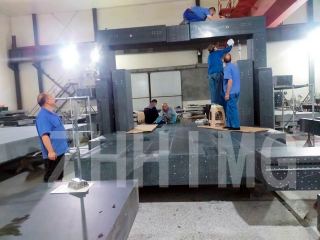Granite is a natural igneous rock known for its durability and stability, making it an ideal material for a variety of applications, including the manufacture of optical instruments. The longevity of these instruments is critical to researchers, astronomers, and professionals who rely on precision and accuracy. Understanding how granite parts extend the life of optical instruments can shed light on the importance of material selection in the design and manufacturing process.
One of granite's main advantages is its exceptional hardness. This property ensures that optical components, such as mounts and bases, remain stable and durable. Unlike softer materials, granite does not easily scratch or deform, which is critical for maintaining the alignment and integrity of optical systems. This stability is particularly important in high-precision applications, where even the slightest misalignment can result in significant errors in measurements or observations.
Additionally, granite has a low coefficient of thermal expansion. This means it does not expand or contract significantly with temperature changes, which is critical for optical instruments that may be used in varying environmental conditions. By minimizing the effects of thermal fluctuations, granite parts help maintain the calibration and performance of optical equipment, ensuring they remain reliable over a longer period of time.
Additionally, granite's natural resistance to moisture and chemicals further extends the life of your optical instruments. Unlike metals, which can corrode or degrade under harsh conditions, granite is unaffected, providing a stable platform for sensitive optical components.
All in all, incorporating granite components into optical instruments can significantly extend their lifespan. The material's hardness, low thermal expansion, and resistance to environmental factors make it an excellent choice to ensure the durability and reliability of these tools that are essential in scientific exploration and discovery.
Post time: Jan-09-2025

